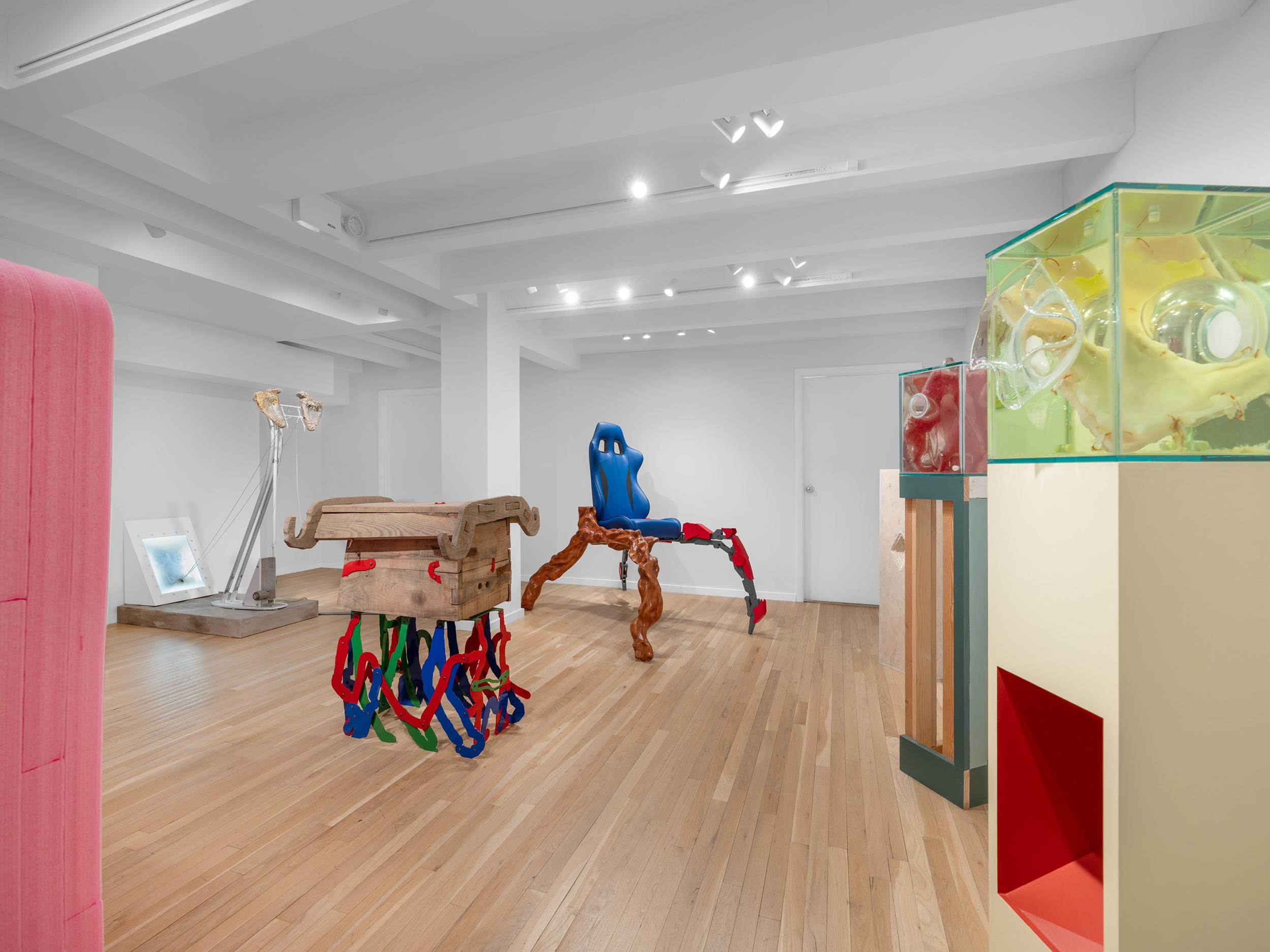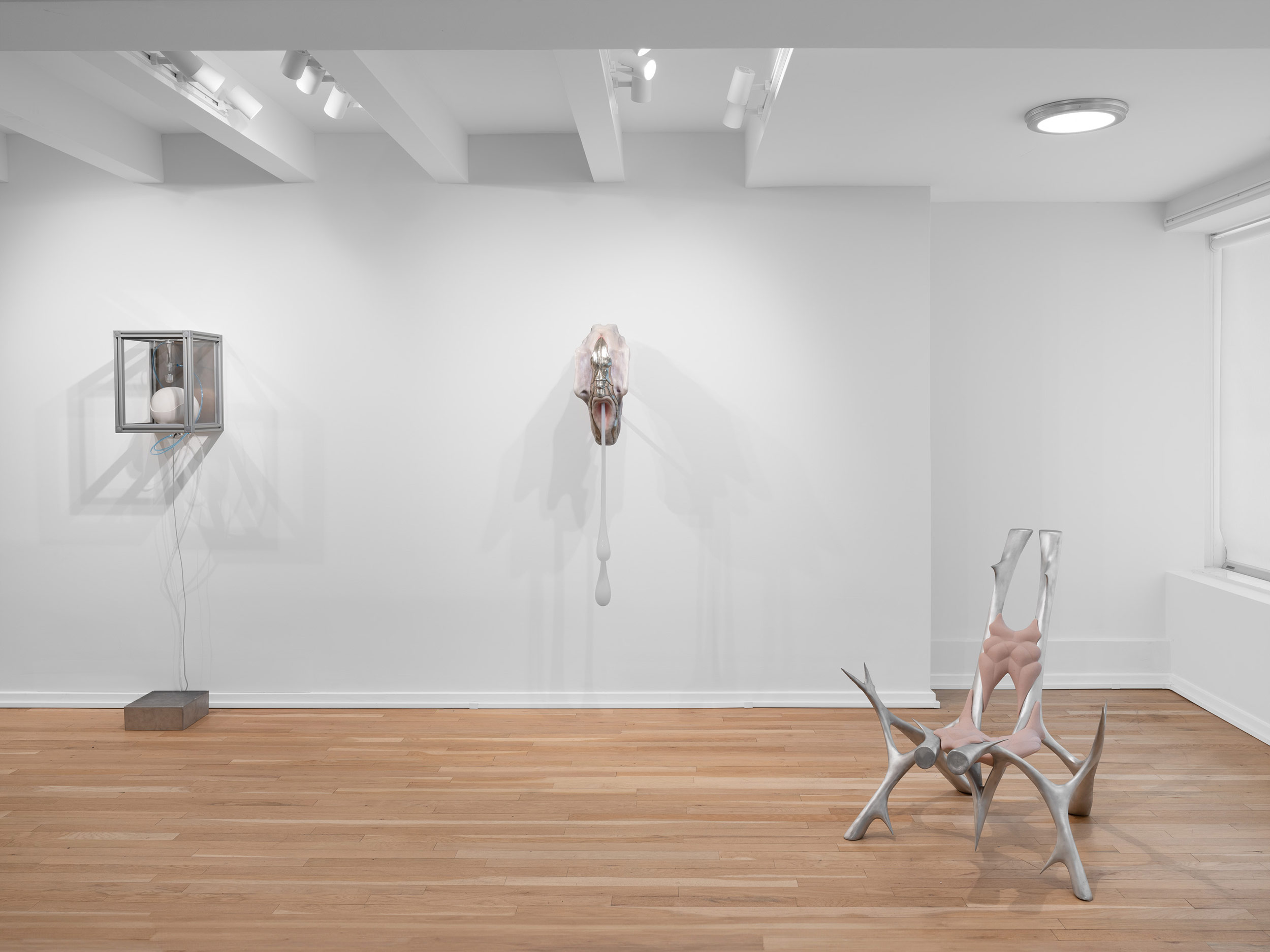Designer Brecht Wright Gander’s curatorial debut takes on a semi-animate world
What do milled-metal layered with mulberry powder, a balloon-like fiberglass lamp, and foam packaging for an oversized baby have in common? For designer and artist Brecht Wright Gander, they are all “body objects.” In his curatorial debut, Gander borrows his titular term from artist Ann Hamilton who used it to describe her own work in the 1980s. In an exhibition now on view at Room 57 Gallery, Gander and the 15 other artists and designers in Body Objects approach the post-human and the (in)animate from many perspectives and media: several artists use higher-tech tools like 3D printing, in the case of Kim Farkas’s insectoid sconces, or parametric design, as with Daniel Widrig’s aluminum-and-silicone Trap chairs—resulting in a kind of “mechanical biomorphism,” Gander says. Other artists go old school, such as Serban Ionescu, whose wood-and-metal cabinet Ducty resembles a figurative sculpture-cum-air duct dredged from a swamp. “Anthropomorphism is often a prominent feature in the Body Objects,” Gander reflects. “But other qualities tend to be attached. For instance, a willful syntheticness or a mechanical aspect of the work often agitates against the anthropomorphism.” In the case of Ionescu’s piece, that mechanical aspect can be seen in the visible joinery and bolts that reveal the literal construction of this character-like sculpture.
For Gander, the idea of a body object is prescient as AI troubles the definition of consciousness, we walk around with smartphones as prostheses, and, with emerging biotechnology, “the distinction between what’s grown and what’s made is increasingly hard to identify.” Thinking of these works in a context that some might call, broadly, “collectible design,” many of the objects also trouble boundaries: between functionality (lamps, shelves, chairs) and non-function (purely aesthetic objects). The exhibition features furniture pushed to such excess that their residual practicality renders them ludicrous, in the case of Nik Kosmas’s Bio-Mech Chair—a racing chair lifted on four sci-fi-ish legs (one pair that looks like its fallen from a Gundam and the other as if it’s made from a gnarled driftwood). This tendency towards being furniture, or like it, also necessarily implicates the human body and its situatedness among a world of things.
Silicone, pneumatic pumps, cascading hair—many of the works tend toward an uncanny surface element or mechanism that at once hints at and veers from aliveness. But particularly striking are Jennifer Sirey’s sculptures. From a distance, they register as post-Minimalist exercises—pigmented plexi boxes atop multimedia plinths. Up close, however, you see the colors are scoby-like colonies of colored bacteria suspended in this liquid, divided by and warped by bubbles and planes in the boxes. No single body, these pieces contain many bodies—and they’re alive.
But it’s the “aesthetic outlier” by Keeley Golden that Gander cites as being like a “complicated organism.” An assemblage of found faux fur (price tag still on), cement, corn stalk, glass, tire rubber, a wasp nest, an off-Tiffany-blue gift box, and more, the wall work, Root Rot, allows an “energy to emerge through the relationship of disparate materials.” At first glance the bricolage appears slapdash, but closer inspection reveals it as controlled and meticulously composed. Root Rot suggests a universe where “natural materials” and human refuse are at equilibrium, an undifferentiated landscape that propagates protozoan body objects anew.









